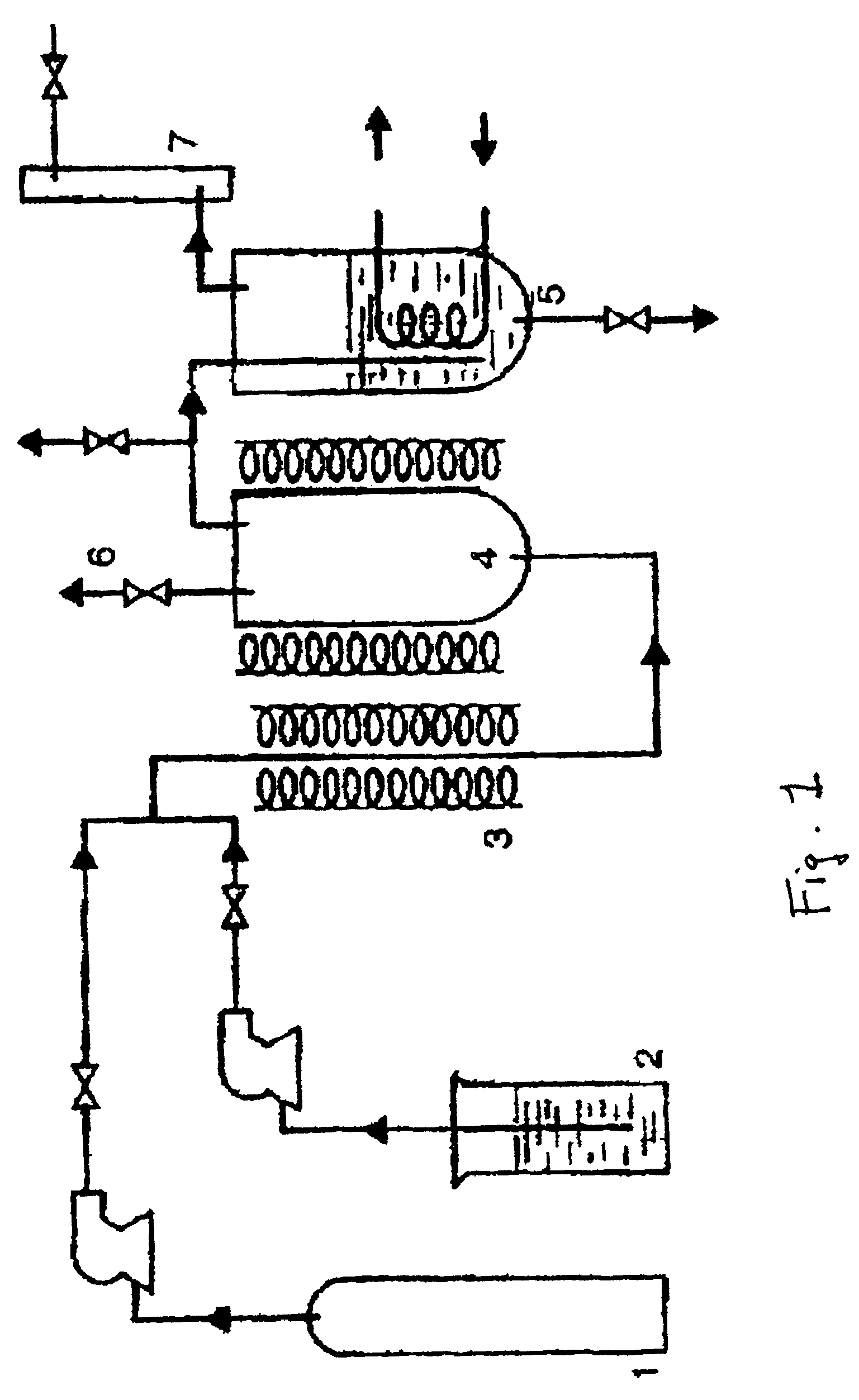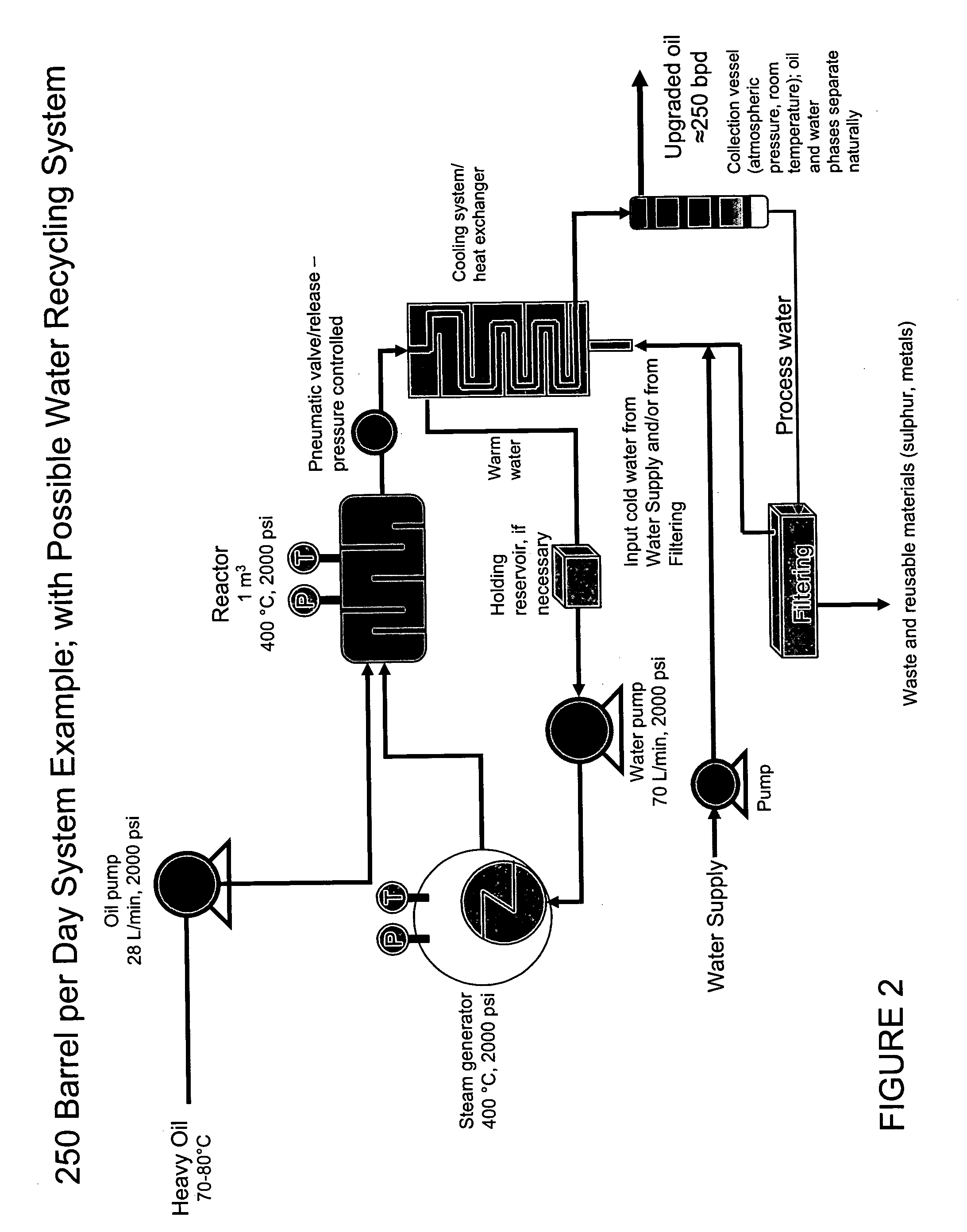Method for extracting and upgrading of heavy and semi-heavy oils and bitumens
a technology of semi-heavy oils and bitumens, applied in the direction of hydrocarbon oil cracking process, non-metal raffination, water treatment, etc., can solve the problems of process equipment used, and achieve the effect of reducing viscosity and density
- Summary
- Abstract
- Description
- Claims
- Application Information
AI Technical Summary
Benefits of technology
Problems solved by technology
Method used
Image
Examples
Embodiment Construction
[0049]The principal components of a suitable reactor of this type are exemplified in the attached diagram (FIG. 1). The numbering in that schematic diagram represents
[0050]1. optionally, high-pressure nitrogen or CO—the latter for enhancement of oil quality (see below);
[0051]2. water reservoir;
[0052]3. preheater in which the SCW is formed;
[0053]4. stirred reactor;
[0054]5. pressure letdown vessel;
[0055]6. sampling or gas release valve; and
[0056]7. activated carbon trap (or other gas collector).
The inlet to the reactor for the hydrocarbon feedstock is not shown, but is desirably between the preheater 3 and the reactor 4 or directly into the reactor 4.
[0057]In such a system, supercritical water, generated by pumping water from the reservoir 2 through the preheater 3, is injected into the reactor 4 at rates similar to those at which it and its entrained hydrocarbon load is withdrawn into the pressure letdown vessel 5 in order to maintain desired operating pressures in the reactor. The r...
PUM
| Property | Measurement | Unit |
|---|---|---|
| temperatures | aaaaa | aaaaa |
| operating pressures | aaaaa | aaaaa |
| operating pressures | aaaaa | aaaaa |
Abstract
Description
Claims
Application Information
 Login to View More
Login to View More - R&D
- Intellectual Property
- Life Sciences
- Materials
- Tech Scout
- Unparalleled Data Quality
- Higher Quality Content
- 60% Fewer Hallucinations
Browse by: Latest US Patents, China's latest patents, Technical Efficacy Thesaurus, Application Domain, Technology Topic, Popular Technical Reports.
© 2025 PatSnap. All rights reserved.Legal|Privacy policy|Modern Slavery Act Transparency Statement|Sitemap|About US| Contact US: help@patsnap.com



